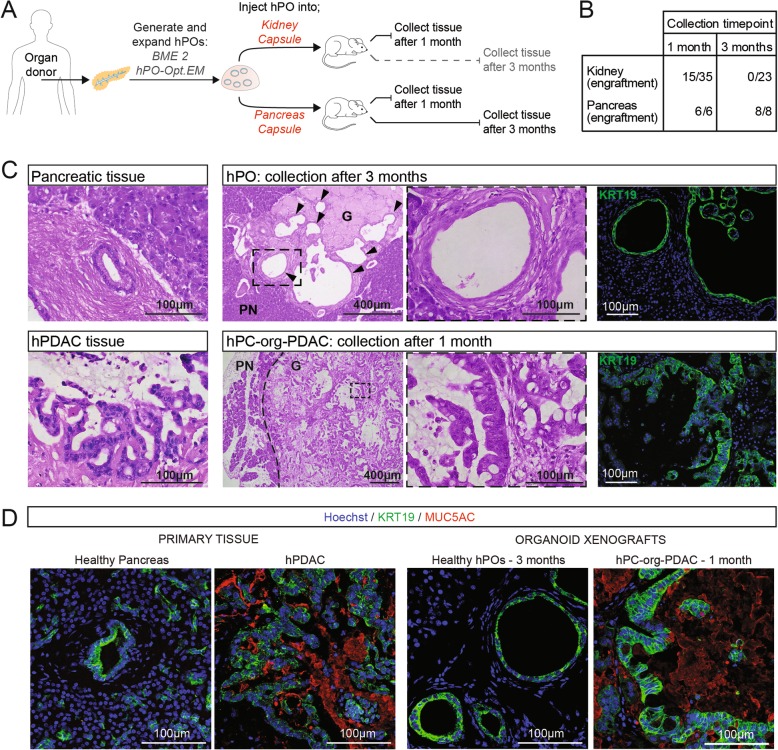Fig. 4.
Expanded human pancreatic organoids (hPOs) do not show signs of transformation following long-term engraftment. a Experimental design. Following hPO generation and expansion with BME 2 and hPO-Opt.EM, hPOs were transplanted into either the kidney capsule or pancreas capsule of NSG mice; tissues were collected after 1 month or 3 months. b Summary of engraftment success after 1 month or 3 months for all hPOs injected, including multiple injection compositions of ECMs and growth factors (for full details please see Table S3 and Fig. S4). c H&E staining demonstrates survival of hPOs (G-Graft) after 3 months in the mouse pancreas (PN-pancreas) and shows engrafted hPOs are formed by a single cell-layered epithelium (upper middle panel) recapitulating the ductal tissue structure of a healthy pancreatic tissue (upper left panel). Xenografts of pancreas cancer organoids (hPC-org-PDAC) obtained after 1 month resulted in aberrant ductal morphology reminiscent of the tumour of origin (lower panels), as expected. The human origin of the engrafted cells in the mouse pancreas is confirmed by expression of human-specific KRT19 (green), nuclei counterstained with Hoechst (blue) (right panels). d Analysis of primary tissue shows expression of the cancer marker MUC5AC (red) only in tissue from a PDAC tumour resection and not in healthy tissue (n = 4). Of note, MUC5AC is absent in xenografts from organoids derived from healthy donors (n = 4), even at 3 months, while it is strongly expressed in xenografts derived from hPC-org-PDAC organoids already after 1 month (n = 2)

